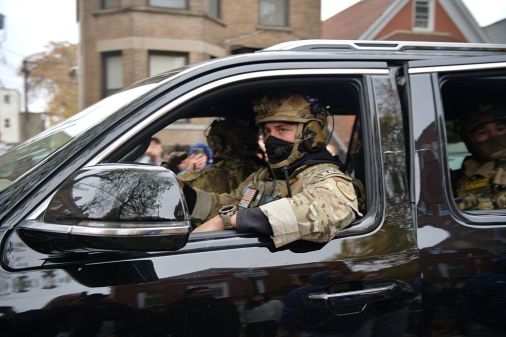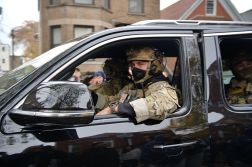Customs and Border Protection’s AI investments won’t erase need for officers, nominee says

Investments in artificial intelligence will make U.S. Customs and Border Protection more effective, but emerging technologies can’t replace the work of agents on inspections, the nominee to lead the Department of Homeland Security component told senators Wednesday.
Rodney Scott, a 29-year U.S. Border Patrol veteran who was pushed out as chief by the Biden administration in 2021, said during his Senate Finance Committee confirmation hearing that CBP needs to make more investments in non-intrusive inspection (NII) technologies and the AI that powers them.
NII technologies can help officers do their jobs, Scott added, but AI “just detects anomalies” currently.
“It takes an actual officer or an agent to determine if there’s actually something illegal there or not,” Scott, who has served as a policy adviser to the agency since the change of administration, said of border inspections. “So making sure that we use human beings — [using] those officers and agents in the most effective manner possible is critical, and I think investments in the technology aspect of it is going to make them more effective. It’s going to make America safer.”
CBP has a lengthy AI use case inventory, which was last updated in December 2024. Agency officials have spoken publicly about some of those uses, including AI-enabled video at ports of entry and on the Southwest border to detect illicit materials and assess threats, and natural language processing models to automate data processing, enhance investigations and cull open-source data systems.
CBP has also poured resources into the development of algorithmic systems to conduct automated inspections of vehicles at the border. FedScoop previously reported on a privacy threshold analysis conducted by the agency, revealing details about a pilot program aimed at helping officers leverage NII to identify contraband and threats.
“NII systems such as vehicle X-ray, radiation portal monitors (RPM), chemical detectors, etc., are tools that provide a more efficient and effective means to screen conveyances and individuals for contraband and identify threats, compared to manual search techniques,” a solicitation document from 2023 stated.
Scott told Sen. Ben Ray Luján, D-N.M., that CBP has a strategy to “significantly enhance” the number of border-crossing vehicles screened with NII tech. “In a perfect world, we would love to get to 100%,” he added, but that will require funding discussions with Congress.
Luján, meanwhile, stumped for more partnerships with CBP and the Department of Energy’s national laboratories to “develop and deploy the next generation of these tools.” The New Mexico Democrat also spoke out for more commercialization of tools developed by agencies in concert with DOE and DHS’s science and tech directorate.
“Border security is a team sport,” Scott told Luján. “So yes, the labs, private industry, the Department of Defense, anybody that’s actually looking at these, I think can be a partner to help us get more and more effective and utilize our personnel more effectively.”






